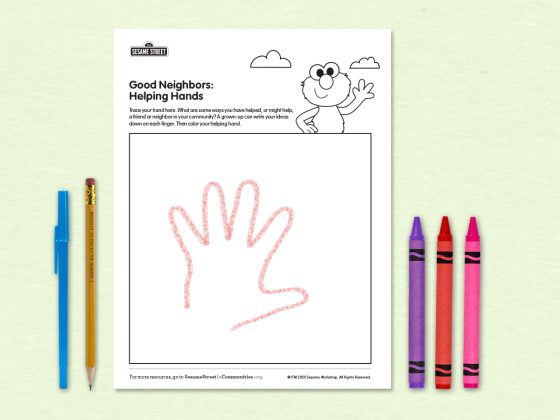
Good Neighbors: Helping Hands
A printable page about helping.
Print this page and help children complete it. Ask children, “How many ways can you think of helping your friends and neighbors?” Ideas might include:
- clapping for an essential worker
- baking and packing treats for essential workers
- collecting coins in a jar and donating to organizations that need help
- packing boxes with donations
- calling a faraway loved one who might be feeling lonely, or who needs checking in on (or doing the same for a neighbor)
- sorting through toys, books, or clothes they don’t use anymore and donating them
- writing a thank-you note or drawing a picture for someone they love or someone they want to thank
- making signs to post in your windows
- doing chores at home to help parents who are working
Of course, in a health emergency, washing our hands can be the biggest help of all!
You can also watch this video about helping.
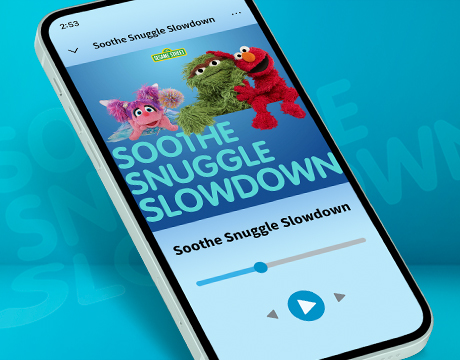
Soothe Snuggle Slowdown: Songs and Strategies for Restful Sleep
This curated playlist helps little ones (and their tired grown-ups) relax and unwind! A mix of mellow tunes sets the mood for naps, bedtime… or just some much needed down time.

Mindful Caregivers
Practicing mindfulness is a great way to slow down and reset.
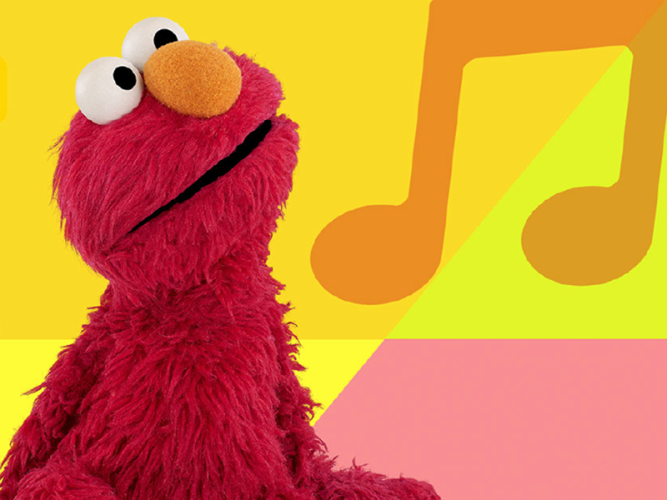
Mindful Monsters: Whole-Body Listening with Elmo
In this podcast, Elmo practices whole-body listening.

Mindful Monsters: Self-Love Mantras with Grover
In this podcast, Grover shares some mindful mantras.

Mindful Monsters: Look and Notice with Cookie Monster
Cookie Monster helps children practice mindfulness by looking and listening carefully to their surroundings.
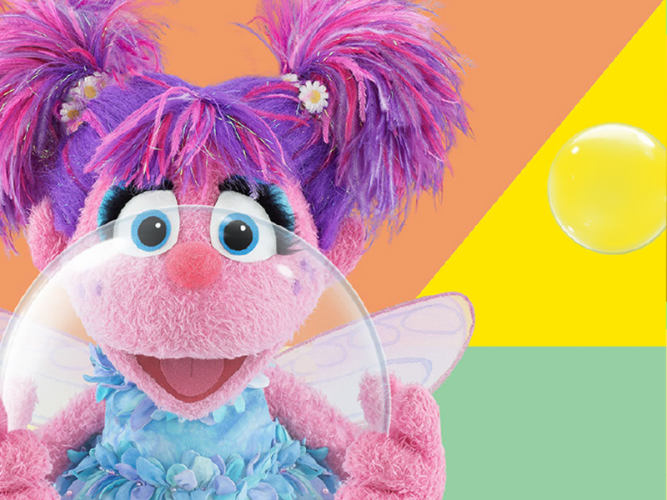
Mindful Monsters: Bubble Breathing with Abby Cadabby
In this podcast, Abby Cadabby guides children through a bubble breathing exercise.
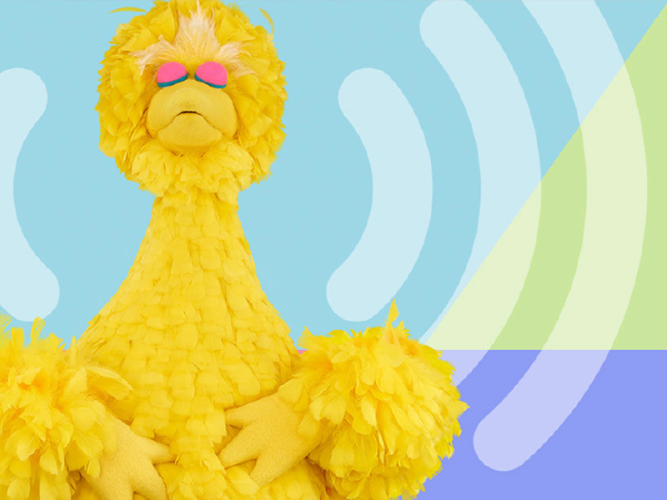
Mindful Monsters: Body Scan with Big Bird
In this podcast, Big Bird guides children through a mindful body scan.
